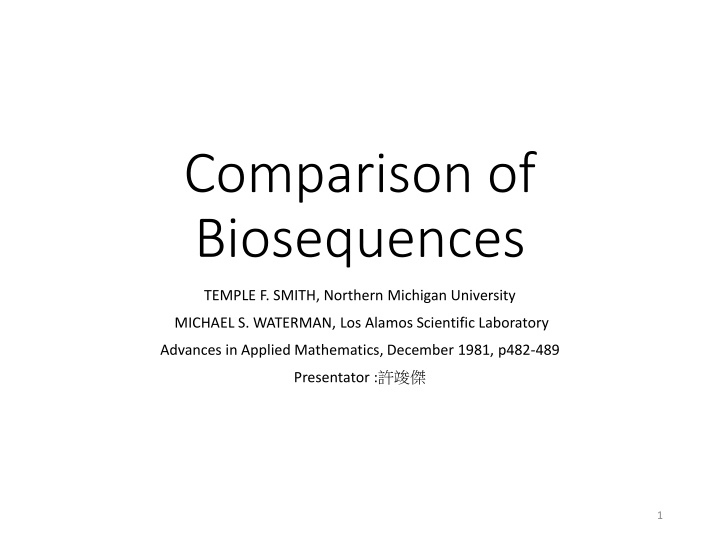
Comparison of Biosequences: Homology, Distance Measures, and Similarity
This study explores the comparison of biological sequences through homology and distance measures, showcasing algorithms for finding similar pairs of segments. The relationship between homology measures and distance measures is discussed, along with maximum similarity segments analysis.
Uploaded on | 1 Views
Download Presentation

Please find below an Image/Link to download the presentation.
The content on the website is provided AS IS for your information and personal use only. It may not be sold, licensed, or shared on other websites without obtaining consent from the author. If you encounter any issues during the download, it is possible that the publisher has removed the file from their server.
You are allowed to download the files provided on this website for personal or commercial use, subject to the condition that they are used lawfully. All files are the property of their respective owners.
The content on the website is provided AS IS for your information and personal use only. It may not be sold, licensed, or shared on other websites without obtaining consent from the author.
E N D
Presentation Transcript
Comparison of Biosequences TEMPLE F. SMITH, Northern Michigan University MICHAEL S. WATERMAN, Los Alamos Scientific Laboratory Advances in Applied Mathematics, December 1981, p482-489 Presentator : 1
Abstract Homology and distance measures have been routinely used to compare two biological sequences, such as proteins or nucleic acids. The homology measure of Needleman and Wunsch is shown, under general conditions, to be equivalent to the distance measure of Sellers. A new algorithm is given to find similar pairs of segments, one segment from each sequence. The new algorithm, based on homology measures, is compared to an earlier one due to Sellers. 2
Similarity and Distance ? = ?1?2?3?4 ? = ?1?2?3?4?5 ? = ?1,?3,(?2,?4), (?4,?5) 3
Maximum Similarity Segments G C C A U U G G C C U C G ? ?,? = 1,?? ? = ? ? ?,? = 1 ??= 1 +? 3,?? ? ? 3 5
